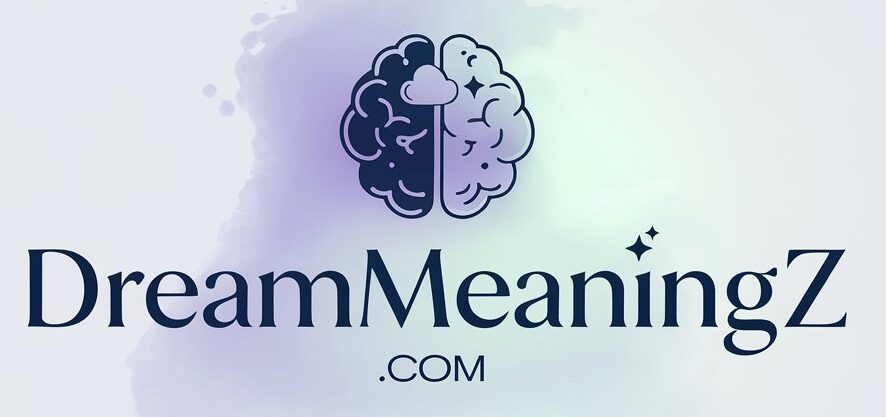Lucid Dream Meaning: The Secrets of Conscious Dreaming
Have you ever woken up from a dream and thought, “Wait, was that real?” Dreams can feel vivid, strange, and sometimes downright confusing. But what if you could take control of your dreams, knowing you’re dreaming while still asleep? This phenomenon is called lucid dreaming, and it’s one of the most fascinating experiences the human mind can achieve.
So, what is the meaning of lucid dreaming?
In simple terms, lucid dreaming is the ability to become aware that you’re dreaming while still in the dream. This awareness allows you to control the dream’s narrative, environment, and even your actions within it. Imagine flying over mountains, meeting your favorite fictional characters, or solving real-life problems—all while asleep!
In this article, we’ll dive deep into the meaning of lucid dreaming, explore how it works, and uncover its incredible benefits. You’ll also learn practical techniques to start lucid dreaming tonight, along with answers to common questions and challenges. Let’s unlock the secrets of conscious dreaming together!
What is the Meaning of Lucid Dreaming?
Lucid dreaming is a state where you become aware that you’re dreaming while still in the dream. Unlike regular dreams, where you’re merely an observer, lucid dreams allow you to take control. You can manipulate the dream’s storyline, interact with dream characters, and even explore imaginary worlds.
This concept isn’t new. Ancient cultures, like the Tibetan Buddhists, practiced dream yoga to achieve spiritual enlightenment through lucid dreaming. Today, it’s studied by scientists and embraced by self-improvement enthusiasts for its mental and emotional benefits.
Lucid dreaming occurs during REM (Rapid Eye Movement) sleep, the stage of sleep where most dreaming happens. During REM sleep, your brain is highly active, almost as if you’re awake. This heightened activity makes it possible to achieve self-awareness within the dream.
How Does Lucid Dreaming Work?
To understand lucid dreaming, let’s take a quick look at the science behind it. When you sleep, your brain cycles through different stages, including REM sleep. During REM, your brain’s prefrontal cortex—the area responsible for self-awareness and decision-making—becomes active.
In a regular dream, this part of the brain is mostly inactive, which is why you don’t realize you’re dreaming. But in a lucid dream, the prefrontal cortex “wakes up,” allowing you to recognize the dream state.
Researchers like Stephen LaBerge have conducted extensive studies on lucid dreaming, proving that it’s a real and measurable phenomenon. Using EEG machines, they’ve observed unique brainwave patterns in lucid dreamers, confirming their conscious awareness during sleep.
History and Origins
Lucid dreaming isn’t a modern discovery. Ancient civilizations have been exploring conscious dreaming for centuries. For example:
- Tibetan Buddhists practiced dream yoga to achieve spiritual growth and enlightenment.
- Ancient Greeks believed dreams were messages from the gods and used them for guidance.
- Native American tribes viewed lucid dreaming as a way to connect with the spirit world.
In the 20th century, scientists began studying lucid dreaming more rigorously. In 1975, Keith Hearne conducted the first scientific study, proving that lucid dreaming was real. Since then, researchers like Stephen LaBerge have expanded our understanding of this fascinating phenomenon.
Benefits of Lucid Dreaming
Why would anyone want to lucid dream? The benefits go beyond just having fun in your sleep. Here’s how lucid dreaming can improve your life:
Mental Health Benefits
- Reduce Nightmares: Lucid dreaming allows you to confront and change scary dream scenarios, reducing anxiety and fear.
- Boost Creativity: Many artists and writers use lucid dreams to spark new ideas and solve creative blocks.
Personal Growth and Self-Discovery
- Overcome Fears: Practice facing your fears in a safe dream environment.
- Improve Problem-Solving: Test solutions to real-life problems while dreaming.
How to Lucid Dream: Step-by-Step Guide
Ready to try lucid dreaming for yourself? Here are some proven techniques to get started:
1. Reality Checks
Throughout the day, ask yourself, “Am I dreaming?” Perform simple tests like:
- Trying to push your finger through your palm.
- Reading text (it often changes in dreams).
2. Dream Journaling
Keep a notebook by your bed and write down your dreams as soon as you wake up. This improves dream recall and helps you recognize recurring dream signs.
3. MILD Technique (Mnemonic Induction of Lucid Dreams)
Before bed, repeat a phrase like, “I will realize I’m dreaming,” to set your intention.
4. WBTB Technique (Wake Back to Bed)
Set an alarm for 5 hours after you fall asleep. When it goes off, stay awake for 20-30 minutes, then go back to sleep. This increases your chances of entering a lucid dream.
Common Challenges in Lucid Dreaming
While lucid dreaming is exciting, it’s not always easy. Here are some common challenges and how to overcome them:
- Difficulty Maintaining Lucidity: If you wake up too soon, try spinning around in your dream or rubbing your hands together to stabilize it.
- Struggling to Remember Dreams: Practice dream journaling consistently to improve recall.
- Fear or Sleep Paralysis: Remind yourself that sleep paralysis is temporary and harmless.
Fascinating Facts
- Some people use lucid dreaming to practice real-life skills, like public speaking or sports.
- Lucid dreaming has been used in therapy to treat PTSD and recurring nightmares.
- Famous figures like Nikola Tesla and Salvador Dalí reportedly used lucid dreaming for inspiration.
Tools and Resources for Lucid Dreaming
- Apps: Try apps like Lucid Dreamer or Dream Journal to track your progress.
- Books: Read Exploring the World of Lucid Dreaming by Stephen LaBerge for in-depth guidance.
- Sleep Masks: Use REM-detecting sleep masks to help induce lucid dreams.
Unlock the Power of Lucid Dreaming
Lucid dreaming is more than just a fun way to explore your imagination—it’s a powerful tool for personal growth, creativity, and mental health. By understanding the meaning of lucid dreaming and practicing the techniques outlined in this article, you can start experiencing this incredible phenomenon for yourself.
So, what are you waiting for? Grab a dream journal, set your intentions, and start your lucid dreaming journey tonight. Sweet dreams!






